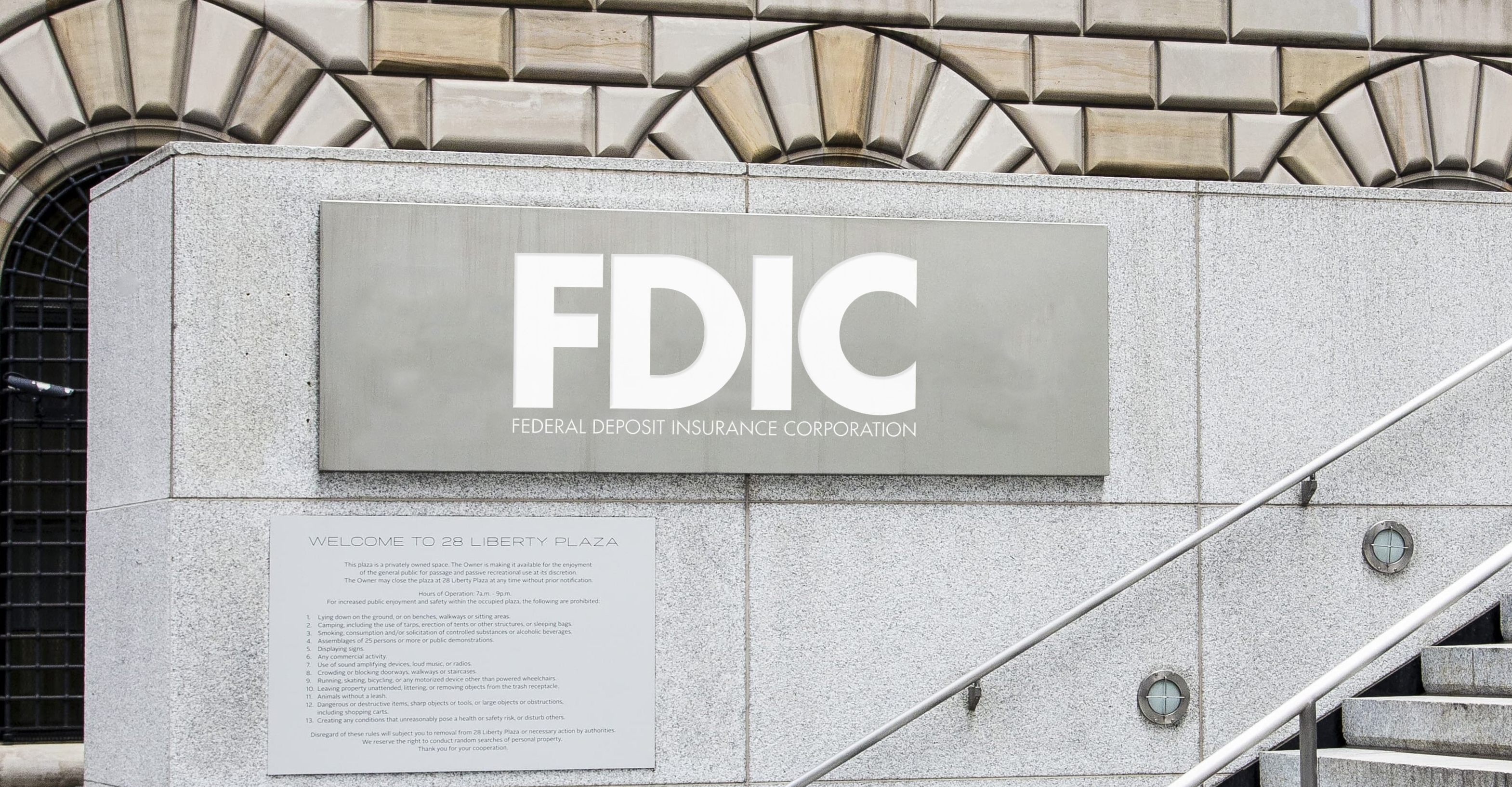Business
Financial Regulator’s Report Could Be Massive Red Flag For Banking Industry

The FDIC. Photo: Alpha Photo https://www.flickr.com/photos/196993421@N03/52742848723/in/photolist-QAbQS8-2omGToK-4yq1Cs-Tnncud-9CtC-2UBgg-2opDYoQ-bPWMXV-2opEkBe-2opBSJ8-2opDbAr-2opDYrR-2opz8iA-7aXCBZ-7aXCAV-2gJupd3-5sJbqE-6URa3V-6URaaT-7aXCyF-5bFTZC-5sDM9g-67suBY-7b2rEA-7b2rAo-7aXCCP-bB7VXu-65NjXw-6iQEWr-6iUQCf-6iUQMQ-6iQERa-6iUQXE-6iUQHC-21A6csy-6z3ESZ-bACM7x-bB7VXE-bB7VXQ-bB7VY1-bB7VXq-6iQF7T-6iQEMp-6iQF5V-6iUQWd-6iUQR5-6iQEGr-6iUQTE-6iUR1u-6iQF2g
The government body in charge of ensuring the health of the banking industry increased the number of banks it considers at risk in the first quarter.
The Federal Deposit Insurance Corporation (FDIC) increased the number of banks on its “Problem Bank List” from 52 in the fourth quarter of 2023 to 63 in the first quarter of 2024, covering a total of $82.1 billion in assets, according to a report from the FDIC. The jump in endangered banks is accompanied by an increase of $39 billion in unrealized losses in available-for-sale and held-to-maturity securities across the industry, culminating in a total of $517 billion in losses currently being held.
The huge amount of unrealized losses is the result of higher interest rates, such as on mortgages, that have increased the cost of credit, according to the FDIC. Higher interest rates are largely the result of the Federal Reserve’s hikes to the federal fund rate, which is currently set in the range of 5.25% and 5.50%.
Despite the jump in problem banks, the FDIC maintains that the sector showed resilience in the first quarter, bringing in a net income of around $64 billion, up nearly 80% from the previous quarter. Smaller community banks brought in a total of $6.4 billion in the quarter, up just 6.1%.
BREAKING: Unrealized losses on investment securities for banks jumped to $517 BILLION in Q1 2024.
This is $39 billion higher than the $478 billion recorded in Q4 2023.
The surge was driven by higher residential mortgage-backed securities losses held by banks due to rising… pic.twitter.com/zlH1Q19KCP
— The Kobeissi Letter (@KobeissiLetter) June 4, 2024
The number of banks on the FDIC’s list right now is more than 60% greater than the quarter immediately preceding the collapse of Silicon Valley Bank (SVB), when the list was at an all-time low, according to the FDIC’s report. There were just 39 banks holding $47.5 billion in assets in the fourth quarter of 2022 on the “Problem Bank List.”
In March 2023, SVB collapsed after a bank run, triggering a national panic and the collapses of First Republic and Signature banks. The FDIC ultimately stepped in and acquired most of the assets from the failed banks, auctioning them off.
Risks in the banking industry remain high, particularly for small and midsized banks, which hold an outsized share of commercial real estate loans. Developers and owners of commercial real estate are currently in crisis due to a lack of demand for office space amid pandemic-era work-from-home policies as well as increased debt costs from higher interest rates.
Featured image. Photo: Alpha Photo. Flickr.
All content created by the Daily Caller News Foundation, an independent and nonpartisan newswire service, is available without charge to any legitimate news publisher that can provide a large audience. All republished articles must include our logo, our reporter’s byline and their DCNF affiliation. For any questions about our guidelines or partnering with us, please contact [email protected].

